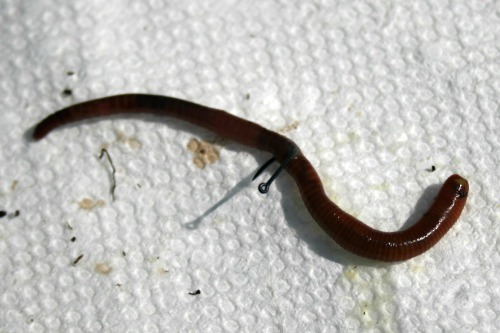Discover How Lake Hickory Bait Can Improve Your Lawn’s Growth and Vitality
Discover How Lake Hickory Bait Can Improve Your Lawn’s Growth and Vitality
Blog Article
Red Wigglers: The Unsung Heroes of Organic Waste Recycling
Red wigglers, or Eisenia fetida, serve as important agents in the organic waste reusing procedure, transforming thrown out materials right into useful vermicompost. As the globe progressively looks for solutions to deal with waste build-up and enhance agricultural performance, recognizing the function of these worms becomes necessary.
What Are Red Wigglers?
The amazing resilience of red wigglers, scientifically recognized as Eisenia fetida, underscores their critical function in organic waste recycling. These little, reddish-brown earthworms are typically discovered in decaying raw material, such as compost heap and manure loads. Lake Hickory Bait. Unlike other earthworm types, red wigglers thrive in nutrient-rich settings and are extremely efficient at damaging down organic products, making them crucial for vermicomposting

(Red Wiggler Express)Along with their function in waste decrease, red wigglers add to dirt health and wellness by boosting dirt structure and aeration through their burrowing tasks (Lake Hickory Bait). Their presence in composting systems not only boosts decomposition rates but likewise advertises a sustainable approach to squander monitoring, showing their significance in environmental preservation efforts
Advantages of Composting With Worms
Composting with worms, especially red wigglers, uses many advantages that boost both waste management and dirt wellness. Initially, these worms successfully break down organic waste, converting it right into nutrient-rich vermicompost that improves soil. This procedure increases decomposition, enabling a much faster recycling of cooking area scraps and other natural products compared to conventional composting techniques.
Additionally, the vermicompost created by red wigglers is including advantageous microorganisms, which help improve dirt structure, oygenation, and wetness retention. This improves the general health of plants, promoting energetic growth and increased yields in yards and farming settings. The usage of worms in composting minimizes the manufacturing of greenhouse gases, such as methane, adding to an extra sustainable waste management system.

Exactly How to Beginning Vermicomposting
Developing a vermicomposting system is a simple process that can produce significant advantages for both waste monitoring and dirt enrichment. To start, select an ideal container, such as a plastic container or wooden box, with appropriate air flow openings to ensure correct airflow. The measurements must preferably be about 2 feet by 3 feet, enabling sufficient space for the worms to prosper.
Following, prepare bedding product, which can consist of shredded paper, cardboard, or coconut coir. This bed linens must be moistened to develop an ideal environment for the worms. When the bedding is in place, introduce red wigglers (Eisenia fetida) into the container, normally around one extra pound of worms for every single square foot of surface area.
Following the placement of worms, add organic waste, such as vegetables and fruit scraps, coffee grounds, and smashed eggshells. Avoid adding dairy products, meat, or oils, as these can create odors and bring in parasites. Position the bin in a shaded, temperature-controlled location to keep ideal problems for worm activity. With these actions, you will effectively launch a vermicomposting system that adds to lasting waste management and enhances your soil.
Maintaining a Healthy And Balanced Worm Container
(Lake Hickory Bait)Maintaining a worm bin growing needs normal attention and like make sure the wellness of the red wigglers and the performance of the composting procedure. Correct upkeep begins with keeping track of the moisture levels; the bin ought to perspire yet not saturated. A great general rule is to keep an uniformity similar to a wrung-out sponge.
Oygenation is vital. Gently blending the bed linen and food scraps every couple of weeks stops compaction and makes sure that all worms have accessibility to oxygen. Additionally, it is important to feed the worms properly. A well balanced diet of vegetables and fruit scraps, coffee premises, and crushed eggshells must be used in small amounts to avoid overfeeding, which can lead to smells and insects.
If the bin ends up being too warm or chilly, the worms may come to be stressed. By diligently taking care of these elements, one can preserve a durable and efficient worm bin.
Impact on Lasting Living
The successful upkeep of a worm container not just profits the health of red wigglers however likewise contributes significantly to lasting living techniques. By recycling Learn More Here organic waste, such as cooking area scraps and lawn particles, red wigglers aid draw away significant quantities of product from garbage dumps. This reduction in waste not only decreases greenhouse gas exhausts however likewise decreases the environmental concern associated with waste administration.
Furthermore, the spreadings created by red wigglers offer as a nutrient-rich organic fertilizer, enhancing dirt wellness and promoting plant growth. This all-natural choice to chemical fertilizers supports sustainable agriculture and horticulture methods, reducing reliance on synthetic inputs that can harm ecological communities. Furthermore, worm composting fosters awareness of waste monitoring, urging people and communities to take on even more lasting routines.

Final Thought
In recap, red wigglers act as important contributors to natural waste reusing through their efficient decomposition of natural materials. Their capability to create nutrient-rich vermicompost improves soil health and supports lasting farming methods. By integrating vermicomposting into waste administration strategies, people and communities can substantially reduce waste while promoting environmental sustainability. The duty of Eisenia fetida in fostering healthy and balanced ecological communities underscores the relevance of these microorganisms in attaining lasting living and improving dirt fertility.
Report this page